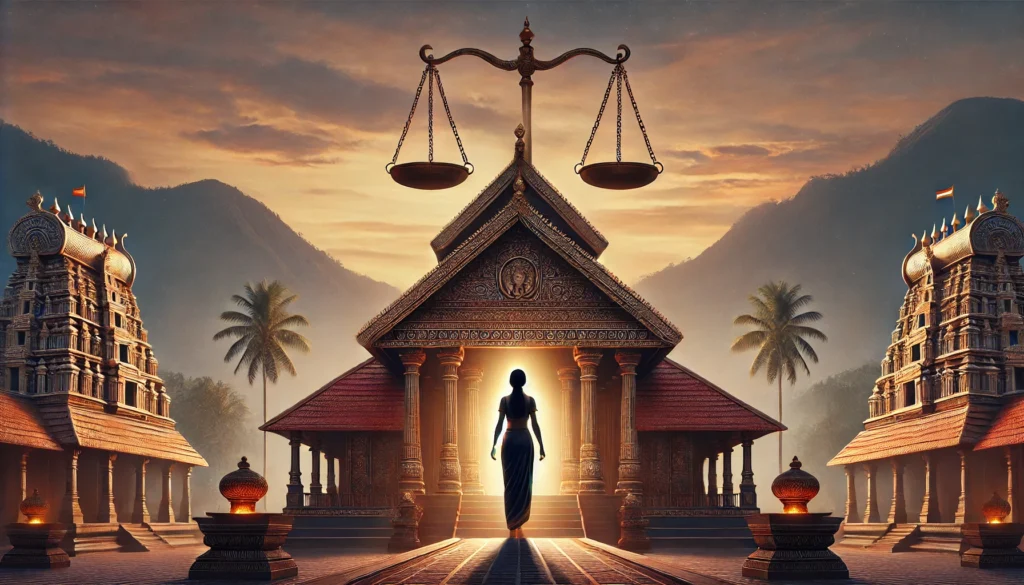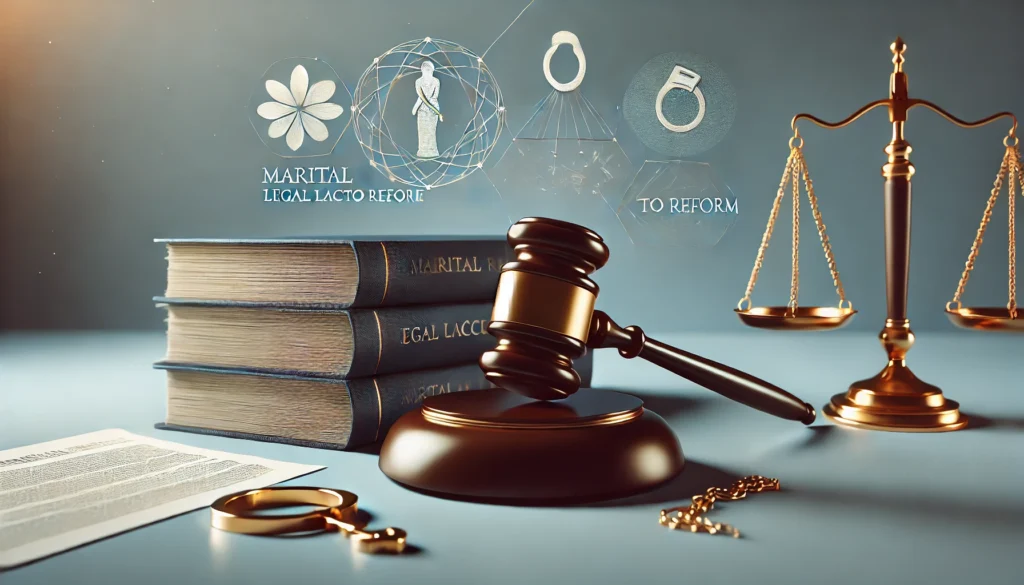Published On: 3rd September, 2024
INTRODUCTION
The right to life and personal liberty is enshrined under Article 21 of the Constitution of India, but it is not absolute and can be curtailed in national interest. But one cannot curtail right to liberty of a person unreasonably and hence, only by procedure established by law this right can be curtailed. In the Criminal Procedure Code,1872 (hereinafter as the Code) if a person is detained and his detention is such which is not required to secure the ends of justice, the person shall be released on bail. J. Krishna Iyer stated that ‘bail is a rule and jail is an exception’[1]. This rule has been emphasized by the hon’ble Supreme Court in its recent judgement, Satender Kumar Antil v CBI[2]. The court while interpreting the terms and the provisions of the Code, observed the shortcomings of bail system, particularly for under trail prisoners. The court also provided the guidelines in addition to the guidelines provided in Arnesh Kumar v State of Bihar[3], besides, the court recommended to introduce Bail Act.
DETAILS
Case Name: Satender Kumar Antil v CBI
Appellant: Satender Kumar Antil
Respondent: Central Bureau of Investigation
Bench: Sanjay Kishan Kaul and M.M. Sundresh, JJ
Type of Case: Special Leave Petition
Date of Judgement: 11th July, 2022
Citation: AIR 2022 SC 3386
BACKGROUND
A chargesheet was filed by the CBI against Satender Kumar Antil under Section 120B of the Indian Penal Code, 1860 and under Section 7 of the Prevention of Corruption Act. He was not arrested during the course of investigation. The trial court took the cognizance on the chargesheet and summoned Antil. He failed to appear before the trial court, the trial court issued a bailable warrant followed by the non bailable warrant to ensure his presence still he did not appear before the trial court. Antil preferred anticipatory bail before the Allahabad High Court, but it was rejected. Consequently, Antil preferred Special Leave Petition before the hon’ble Supreme Court[4].
FACTS
The issue under consideration was raised regarding the observation influx of bail applications after submission of final report due to misinterpretation of Section 170 of the Code. The court also attempted to categorize the offences to use as guidelines for future.
ISSUE
Whether the unnecessary arrests of person charged during an inquiry, or both before and after chargesheet was filed, is valid or not?
EARLIER ORDERS
Prior to the final verdict in the said case the Supreme Court has given a series of orders while addressing the issue. In the interim order dated 07.10.2021 the Supreme Court categorized various offences into four categories and laid down guidelines pertaining to the procedure to be followed in such cases which meet the pre-requisites
- Person should not have been arrested during the investigation
- The person has co-operated throughout the investigation including appearing before the Investigating Officer whenever called for.
The categories of offences and guidelines prescribed are-
CATEGORY A – Offences punishable with imprisonment of 7years or less not falling under category B&D.
After filing of the chargesheet/complaint and taking cognizance of the same
- Ordinary summons at the first instance, including permitting appearance through lawyer;
- If the accused does not appear on service of summon, then Bailable Warrant may be issued
- Non-Bailable Warrant to be issued if fails to appear despite issuance of Bailable Warrant
- If the accused files application and undertake to appear on the next date, Non-Bailable Warrant may be cancelled or converted into Bailable Warrant/Summons without insisting his physical appearance
- Bail application must be decided on his appearance without the accused being taken into physical custody or by granting interim bail till the bail application is decided.
CATEGORY B – Offences punishable with death, life imprisonment or imprisonment for more than 7 years.
On appearance of the accused, bail application to be decided on merit.
CATEGORY C – Offences punishable under Special Acts containing stringent provisions for bail like NDPS (Section 37), PMLA (S 45), UAPA [S 43D (5)], Companies Act [S 212 (6)].
On appearance, application to be decided on merits, along with compliance of provisions of bail contained in Special Act.
CATEGORY D – Economic offences not covered by Special Acts.
On appearance of the accused in court the bail application to be decided on merit. Further, the seriousness of the charge and the severity of the punishment imposed by the statue should be considered.
In the order dated 16.12.2021 the Supreme Court in this order provided certain clarifications in lieu of the previously stated order.
- Intent behind the guidelines was to ease bail process and not to restrict it. The guidelines do not impose additional fetter, rather, they intend to widen the scope of bail.
- The court cautioned that merely by categorizing certain offences as economic offences which may be non-cognizable, it does not merely mean that a different meaning is to be given to the previously stated order.
- The court further clarified that if during investigation the accused has not been arrested, merely the filing of chargesheet would not be ipso facto cause to arrest him, as aspect clarified by Supreme Court in Siddharth v State of Uttar Pradesh[5].
JUDGEMENT
The Supreme Court in its final verdict on 11.07.2022 dwelled on the situation of undertrial prisoner, the court accentuated that the jails in India are flooded with undertrial prisoners, further the court asserts that the fact arrest is a draconian measure resulting in curtailment of liberty, thus to be used sparingly. The court also endeavour to provide a definition of ‘trial’ and ‘bail’ as both the terms are not defined in the Code. The court further reiterated the principle that the bail is rule and jail is an exception with the reference of various judgements and with regards to the provisions of the Code for – Arrest (Section 41, 41A and 60), Issuance of warrants and taking bonds (Section 87, 88), Default bail (Section 167(2)), Issue of process and committing case to the court (Section 204, 209), Adjournment (Section 309), Suspension of sentence pending the Appeal (Section 389), Bail on half sentence served as undertrial (Section 436A), Bail provisions (Section 437, 439), and Amount of bond (Section 440).
Clarification on Categories of Offences
With respect to category A & B court held that the same general principle regarding bail will apply. In category A, the court has to exercise its discretion in the favour of accused and in the category B, the cases to be dealt with case-to-case basis.
For category C, it was stated that the general provisions regarding delay shall remain untouched, for instance, in absence of any special provision in the Special act, the Section 436A of the Code would apply. Since there are usually few witnesses in the cases, the trial should be completed quickly. To expediate the process strict compliance of Section 309 of the Code should be done. The Supreme Cout has referred to a number of judgements like Union of India v K.A. Najeeb[6], Supreme Court Legal Aid Commission v Union of India[7], Hussainara Khatoon (IV) v Home Secy., State of Bihar[8], while determining the liberty guaranteed under Part III of the Constitution covering protective ambit of due process, fairness, access to justice and speedy trial. The Court also clarifies the interpretation of Section 170 0f the Code, the discussion made by the court in other offences would apply here. Further court elucidated that if an accused is in confinement, the same would continue and thereafter the provisions of the Special Law would apply. It is only in a case where the Accused is either not arrested consciously by the prosecution or arrested and enlarged on bail, there is no need for further arrest at the instance of the court. If in Special law there is a provision of default bail it shall prevail, even here court has satisfied itself under Section 440 of the Code.
For category D, the question before the court was whether to treat economic offences as class of its own or otherwise. It was observed that economic offences include variety of activities and they differ form each other. Therefore, gravity of offence, objective of Special Act, and attending circumstances are few factors to be taken care of along with the period of sentence. The court advised not to categorize economic offences in one group and deny bail on that basis. Court referred to P. Chidambaram v Directorate of Enforcement[9] and Sanjay Chandra v CBI[10] for the same.
GUIDELINES ISSUED
- The Government of India to consider to introduce separate stature for dealing bail, so as to streamline the grants of bail.
- Investigating agencies and officers are obliged to follow guidelines given in Arnesh Kumar for Section 41 and 41A and non-compliance would amount to appropriate action by higher authority.
- All State Government and Union Territories to facilitate standing orders for procedure to be followed under Section 41 and 41 A.
- Strict compliance of mandate laid down in Siddharth v State of UP.
- Regarding the establishment of Special Courts, the State Government and Central Government must abide to the directions given by the Supreme Court. The High Court will need to after consulting State Government conduct a study to determine the necessity of Special Courts. The vacancies in position of presiding officer will have to be filled as soon as possible.
- The High Court needs to conduct an exercise to find out the undertrial prisoners falling short to comply with the conditions of bail, after appropriate action in light of Section 440 of the Code, facilitating release.
- For sureties, mandate given under Section 440 should be kept in mind.
- Both the District Judiciary level and High Court level, as directed in Bhim Singh case, must conduct exercise, to comply with Section 436A of the Code.
- Bail applications are to be disposed of within two weeks, except if otherwise provided in the provision. Anticipatory Bail shall be disposed of within six weeks, with the exception of intervening application.
- The State Government, Union Territory and High Court are required to file a status reports/affidavits within a period of four months.
CONCLUSION
The current scenario in the criminal justice system is very complicated. Bail is not considered to be a rule, which leads to an increase in the number of undertrial prisoners. Also getting bail is a costly affair for poor. But in the case of Satender Kumar Antil v CBI the Supreme Court highlights the need for bail reforms in India. The judgement underscores the principal of bail is rule, jail is an exception and also speedy disposal of bail application so that no individual will be deprived of justice due to delayed process. This judgement is a step towards reforming the bail system, ensuring that it is used as tool to bestow justice and not to oppress. The case sets a precedent for future bail matters, guiding courts to adopt a more nuanced and balanced approach.
Now the new laws have come into light, the Bharatiya Nagarik Suraksha Sanhita, 2023 brings significant changes to bail provisions as compared to the Criminal Procedure Code, 1973. Key improvements include a comprehensive definition of bail, expanded eligibility for bail, especially for first-time offenders, and stricter conditions for those who are facing multiple charges. There are some minor changes in the concept of Anticipatory bail as well where it excludes bail in gangrape cases involving minors. On the whole it establishes procedure to ensure fair treatment of undertrial prisoners.
[1] State of Rajasthan vs Balchand @ Baliay, AIR 1977 SC 2447 (India)
[2] Satender Kumar Antil vs Central Bureau of Investigation & Ors. AIR 2022 SC 3386 (India)
[3] Arnesh Kumar vs State of Bihar, AIR 2014 SC 2756 (India)
[4] Supreme Court’s guidelines in bail matters: Compliance is the key – The Leaflet, (2022), https://theleaflet.in/supreme-courts-guidelines-in-bail-matters-compliance-is-the-key/ (last visited Jul 10, 2024).
[5] Siddharth v State of Uttar Pradesh, (2021) 1 SCC 676 (India)
[6] Union of India v K.A. Najeeb, (2021) 3 SCC 713 (India)
[7] Supreme Court Legal Aid Commission v Union of India (1994) 6 SCC 731(India)
[8] Hussainara Khatoon (IV) v Home Secy., State of Bihar (1980) 1 SCC 98 (India)
[9] P. Chidambaram v Directorate of Enforcement (2020) 13 SCC 791 (India)
[10] Sanjay Chandra v CBI (2012) 1 SCC 40 (India)




